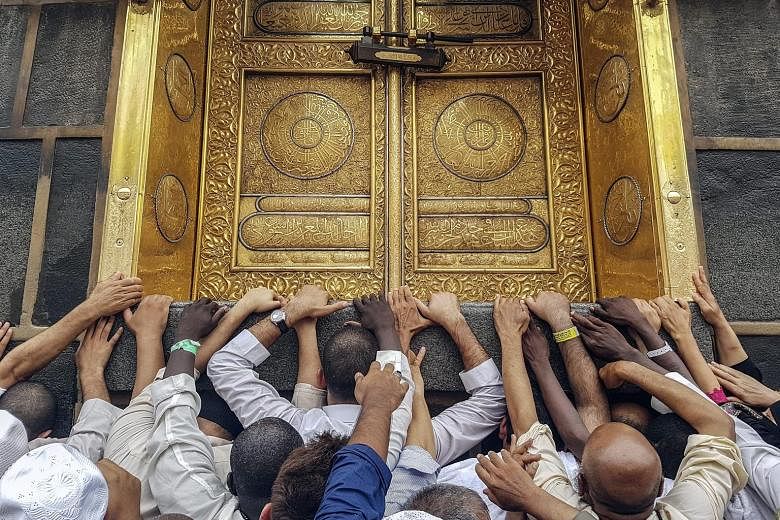MECCA • From Asia, Africa and points in between, Muslims launched the annual haj pilgrimage to Islam's holiest sites yesterday, undeterred by a stampede last year that cost around 2,300 lives.
The numbers, about 1.5 million, are down because of the absence of tens of thousands of Iranians over tensions between the Shi'ite nation and Sunni-dominated Saudi Arabia, which is home to the sites in Mecca and Medina.
The 2015 stampede magnified those frictions.
After preliminary rituals last week in Mecca at the Grand Mosque, the pilgrims moved yesterday, many by bus, to Mina, several kilometres to the east, in temperatures exceeding 40 deg C. They were following in the footsteps of Prophet Muhammad who performed the same rituals about 1,400 years ago.
"It's an indescribable feeling. You have to live it to understand. This is my sixth haj and I still cannot express how happy I am to be in Mecca," said Mr Hassan Mohammed, 60, from Egypt.
The haj is one of the five pillars of Islam, which Muslims who are capable of performing must do so at least once, marking the spiritual peak of their lives.
For the first time in 35 years, Saudi Arabia's top cleric will not give a traditional haj sermon to pilgrims from around the world, a newspaper reported yesterday.
Grand Mufti Abdul Aziz al-Sheikh has annually addressed the faithful from the Namira mosque in Mount Arafat for the peak of haj, which this year falls today. Okaz newspaper, citing anonymous sources, said the Mufti "will step down from delivering the sermon on the day of Arafat, due to health reasons".
The first day of the haj was traditionally the chance for pilgrims to let their animals drink and to stock up on water. Then they proceed to Mount Arafat, several kilometres further, for the peak of the haj.
Mina becomes their base, where fireproof tents can accommodate 2.6 million pilgrims.
Last September, Mina was the scene of the deadliest disaster in haj history, when the stampede broke out as pilgrims made their way to the Jamarat Bridge for a stoning ritual.
This year, thousands of Iranians have chosen to visit the shrine of Imam Hussein in the holy Iraqi city of Karbala for an alternative pilgrimage. It is in one of the holiest sites in Shi'ite Islam.
"I expect the number of pilgrims to reach a million, about 75 per cent of them Iranians," Mr Adel al-Mussawi, a shrine official, told Agence France-Presse.
Meanwhile, Saudi Interior Ministry spokesman Mansour al-Turki spoke of "great efforts being exerted by the kingdom, not only in maintaining the security and safety of the pilgrims, but in facilitating performance" of the rites as well.
Many pilgrims appeared satisfied yesterday.
"Everything is well organised," said Mr Nasser Benfitah, 54, from Morocco.
"We feel safe," chimed in a Nigerian pilgrim, Ms Hafsa Amina, 26.
AGENCE FRANCE-PRESSE

